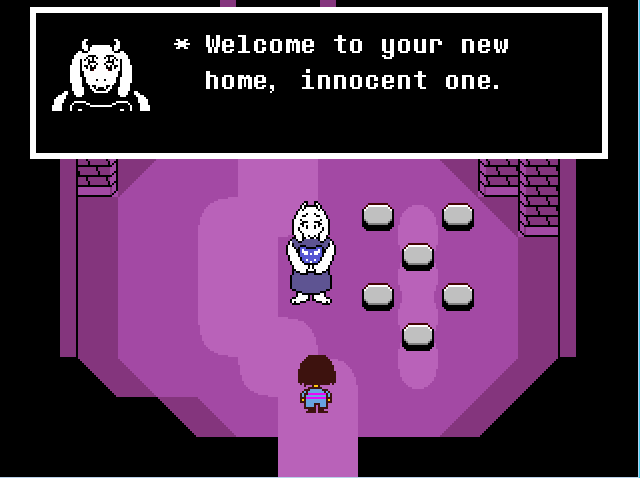Courtesy of Toby Fox
Connector Editor
In my opinion, the best pieces of art are the ones capable of defying genre and expectation. When people are trying to determine the worth of a particular form of entertainment, there is often a need, by the creators or the consumers, to categorize it within set genres, and most of the time that is fine. For the creator, it is always important to know the focus of your work and what demographic it is aiming for, so conforming to a particular genre is an effective way of accomplishing that. But in my mind, a story that can make you laugh just as well as it can make you cry is more valuable and affecting than a story that can only do one or the other. Not many pieces of entertainment can accomplish this, and many probably should not try, but it should be appreciated when something comes along that is capable of striking that balance. “Undertale,” a little-known indie game I had not even heard of before last week, is one of those genre-defying works, and it is one of the best games to be released this year.
The story of “Undertale” starts off simply enough: thousands of years ago, there was a war between humans and monsters that resulted in the monsters being sealed away in a vast underground city, never to be seen again. That is, until one day when our unnamed protagonist falls down a hole while playing in the woods. From there, he is told by a kind sorceress named Toriel that in order to escape, he must travel across the underground kingdom to reach the magic barrier keeping the monsters underground and pass through it, all the while trying to avoid falling into the clutches of King Asgore, who is searching for a human soul that he can use to destroy the barrier and free his people.
What makes the story of “Undertale” so great is that, while the plot has a degree of darkness to it that gets more pronounced as the story goes on, it never gets bogged down by character drama for long enough to get tiring. It knows when to make its story serious and when it needs to lighten up, and it accomplishes this thanks to a sharp and oftentimes unconventional sense of humor, which left me giggling from start to finish. That said, when it does choose to focus on the drama of its characters and setting, it does so with flying colors. Most of the monsters that populate the game’s world are more interested in living peacefully than getting in your way, and the ones that do are driven more from a desire to escape their underground prison than out of a blind hatred for humans. This goes a long way towards humanizing the usual group of RPG enemies, thus feeding into the game’s themes of non-violence and influencing the game’s central mechanics.
These mechanics refer to your character’s action and mercy abilities. For the most part, “Undertale” plays similarly to a standard turn-based RPG, with the player exploring different areas of the underground, fighting monsters and leveling up. However, while you can fight enemies the traditional way, it is also possible to examine enemy behavior to determine a monster’s personality and respond to it accordingly. Doing so can grant multiple different bonuses in battle, but it can also be used to convince your enemy to give up the fight, allowing you to spare them and walk away with a clear conscience. While this feature does make the game considerably harder, as you cannot gain experience from monsters you do not kill and cannot level up as a result, it also means that the player can get through the entirety of the game without killing anyone, which is not only fulfilling in its own right, but also greatly impacts how different events play out later in the story, including how the game eventually concludes. This also makes the game surprisingly re-playable, as the most innocuous of choices early in the game can have massive repercussions as the story progresses.
If there is one thing that may keep people from giving “Undertale” a chance, it is the graphics. While it is by no means a bad-looking game, its somewhat simplistic backdrops and black and white portrayals of every enemy, while fitting the game’s NES role-playing game aesthetic, could be a turnoff for some. That said, the art direction for the game is strong across the board, and the game is more than capable of looking great when the need arises. Any problems posed by the graphics however are countered by the game’s audio, with some excellent sound design and a soundtrack that has quickly become one of my favorite retro themed soundtracks ever, right next to “Shovel Knight” and “Hotline Miami.”
“Undertale” may just be one of the best RPGs I have ever played. At no point during the eight hours it took me to beat it was I ever bored. When it was not entertaining me with its biting humor or giving me pause with its cast of well-developed characters, it was making me think on my feet with its unusually energetic combat system and fun puzzles. It is everything independent games strive to be and if you are at all interested, get this game right now. You will not regret it. “Undertale” is available on PC for $10. Those interested can also play a free demo available on the game’s website.




